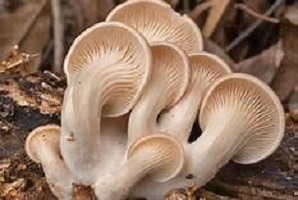18 Mushroom facts Nutritional Values and Health Benefits
18 Mushroom facts Nutritional Values and Health Benefits

Mushroom Information
- Mushrooms have many health benefits; they are low-energy-dense food, which means they have few calories per unit of volume of food. It’s a nutritious complement to your meal.
- Mushrooms are keto, Paleo, and Atkins-friendly, and they’re great for vegetarians and vegans alike.
- Since they are 80-90 percent water, they are also suitable for weight watchers.
- Mushrooms are low in fat, cholesterol, and gluten.
- They have low sodium and calorie content.
- A mushroom is a spore-bearing fungus that is known as a vegetable in the food industry. These spores which disperse like seeds are produced in the gills underneath the cap of the mushroom.
- There are tens of thousands of mushroom varieties, with many more undocumented or unknown. Each has its own distinct flavor, ranging from mild to earthy, as well as a distinct shape and texture.
- Mushrooms may be purchased fresh or dried; if dry, rehydrate with water or broth before using.
- The world’s first mushroom cultivation was discovered in China, and China is the world’s leading mushroom producer.
- Mushrooms are not widely eaten in Nigeria. While mushroom farms are gradually springing up, they are mostly foraged rather than farmed. Ero or Elo (Igbo), Leman kwado (Hausa), Olu (Yoruba), Ehunhun (Yagba-Kogi), Utun (Yagba-Kogi), Utun (Yoruba), Utun (Yoruba), Utun (Yoruba), Utun (Yoruba), Utun (Yoruba), Utun (Yoruba), Ut (Esan), Eru (Ikwerre), Kuba (Jukun), Udip (Ibibio) etc.
- Mushrooms have a high umami flavor (almost meat-like flavor), making them excellent flavor enhancers. • Different varieties of mushrooms have different nutrient profiles, for example, portobellos are high in potassium while porcini are high in ergothioneine. The bright orange mushroom known as “Chicken of the Jungle” has a fried chicken flavor.
- Mushrooms are flavor sponges, absorbing the flavors of every dish to which they are added.
- Mushrooms have fewer calories per serving than rice cakes.
- Certain mushrooms, such as European White Truffle (Italy), Yartsa Gunbu (Himalayan regions), and Matsutake (Japan), are extremely costly, costing thousands of dollars per kilogram (Japan)
- When women smell a form of stinkhorn mushroom that grows in Hawaii, they experience orgasm. It hasn’t been scientifically proved to be accurate.
- Some mushroom varieties, such as Mycena Chlorophos, shine in the dark.
- Mycology is the study of mushrooms; a Mycologist is someone who studies mushrooms; a Mycophagist is someone who enjoys and eats mushrooms. Fungicultutre is the extraction of food from fungi.
Benefits of Mushroom – Human consumption
Mushrooms are divided into three categories: edible, inedible, and poisonous.
Edible mushrooms are the most popular mushrooms consumed around the world.
Inedible mushrooms: They won’t make you sick, but they have a rough texture and a bad taste. Some mushrooms with psychedelic compounds, such as Psilocybin mushrooms (magic mushrooms, shrooms), such as Liberty cap, have psychoactive properties.
Some, such as panther cap, contain muscimol, a psychoactive compound. They’re powerful hallucinogens that can induce anxiety and panic, as well as euphoria, similar to ephedrine.
Poisonous mushrooms are extremely hazardous. Some of them cause death by attacking the gut, liver, or kidney. Never take a chance; if you’re not sure if a mushroom is healthy, don’t eat it. For example, the Death cap, web cap, and so on.
Mushroom farmed or foraged in Nigeria
White buttons, cremini, portobello, and other common mushroom species can be found all over the world. Here is a list of some of Nigeria’s most common species, both wild and farmed.
Their botanical name (common name), as well as their Nigerian (Yoruba) names, are included. (Photos to follow)
Where mushroom grow
Mushrooms thrive on decaying organic matter in the soil, as well as plants, living organisms, and other fungi. They prefer damp, shady areas. Since it is an environmental cleaner, you must be cautious about where you grow mushrooms or the source of edible mushrooms. Some people can also consume heavy metals from their surroundings.
Sawdust, grass, a log of wood, farm waste, domestic waste, and other materials can be used to grow mushrooms in Nigeria. There are a lot of mushroom farms, and most of them sell spawn so you can start your own. Consumption of mushrooms is still poor, particularly in Nigerian cities, due to a lack of knowledge about their health benefits.
Nutrients from mushrooms | Benefits of Mushroom
Mushroom is a nutrient-dense superfood and a natural multivitamin. It’s packed with high-quality protein, unsaturated fatty acids, and fiber. Although the Chinese and Japanese have used mushrooms in medicine for centuries, there is a promising clinical study on the topic.
A lot of research into mushroom healing is still going on. A lot of research into the health benefits and therapeutic uses of mushrooms is still going on. Their effectiveness is also dependent on the mushroom type, dosage, harvest period, maturity, and whether they are raw or cooked.
One cup of raw white mushroom, diced or cut, has 15 calories, 0 grams of fat, 2.2 grams of protein, and 2.3 grams of carbohydrate (including 0.7 grams of fiber and 1.4 grams of sugar). 225g whole mushroom = 3 cups sliced or chopped mushrooms.
Mushroom health benefits | Benefits of Mushroom
- A strong antioxidant
The highest food source of ergothioneine and glutathione, both antioxidants, is mushrooms. They are anti-aging in nature. They can only be found in some foods, such as kidney, liver, black and red beans, and so on.
Cholesterol
Mushrooms lower total cholesterol, triglycerides, and LDL cholesterol, but have little effect on HDL cholesterol. This is particularly true of diabetic patients.
- Antimicrobial agents
They have antibacterial and anti fungicidal properties that are extremely promising, especially for microorganisms that are resistant to traditional treatments.
- Immune system
Mushrooms aid in the maintenance of a balanced immune system as well as the control of inflammatory responses. They improve cell function as well as gut health.
They also help to minimize disease incidence, perhaps as a result of a lower risk of becoming overweight, which lowers the risk of metabolic disease.
- The ability to think | Cognition
Mushrooms aid in the prevention and treatment of dementia, Parkinson’s disease, and Alzheimer’s disease.
- Weight management
They’re high in nutrients, filling, and tasty, but they’re low in calories. Mushrooms are a low-calorie alternative to beef.
- Oral hygiene
Plaque, gingivitis, and oral bacteria are all reduced when the mushroom extract is used as an oral mouthwash.
- Cancer dangers/risk
There is clinical research on the use of mushrooms to lower the risk of breast cancer. Also, the association between white mushrooms and breast cancer, as well as the reduction of PSA (Prostate-Specific Antigen) levels in men.
- Heart health is important.
Mushrooms help to reduce blood pressure without harming the liver or kidneys. They have low sodium and saturated fat content. When cooking, the umami flavor of mushrooms, which is a flavor enhancer, allows you to use fewer salt and seasoning cubes.
- Protection of the digestive system
Mushroom is prebiotic that encourages the development of beneficial microorganisms in the intestines, which in turn helps with digestive health. It also aids in the inhibition of pathogenic microorganisms.
- Knowledge on mushrooms
What to Look for When Buying Fresh Mushrooms
- The mushroom must be solid and free of bruises.
- The gills should be in good condition. The gills of older mushrooms would be more spread out.
- The surface should be slightly moist and plump, rather than dried, slimy, muddy, or spongy.
- It should have an earthy, fresh, and sweet scent rather than a musty or sour one.
- Caution
- Purchase your mushrooms from reputable vendors.
- If you’re unsure, don’t buy. Poisonous mushrooms can resemble edible mushrooms in appearance.
- Because of dirt and other particles, always clean your mushrooms thoroughly
- Certain mushrooms should not be consumed fresh.
Mushroom Poisoning Symptoms
If you don’t have a lot of experience foraging for mushrooms, you can avoid it. Also, just buy from reputable grocery stores and farmers.
The symptoms of mushroom poisoning will appear within 4 hours, but they can also appear much sooner. If you think you’ve eaten a poisonous mushroom or have symptoms of mushroom poisoning, see a doctor.
- Among the warning signs are:
- Nausea, vomiting, cramps, diarrhea, headaches, dizziness, chills, shivering, kidney and liver failure, prolonged salivation, and other symptoms
- Keeping things in storage
- Mushrooms spoil quickly, so it’s important to store them properly to prolong their shelf life.
- If you purchased your mushrooms from a pharmacy, keep them in the original store packaging in the refrigerator. Stores box mushrooms for long-term storage. Cover with paper towels or holes in loose cling film until it’s been opened.
- Keep in the fridge in a paper bag. Poke holes in the paper bag from top to bottom.
- Place in a tub with plastic wrap on top, poke holes in the plastic, and place in the refrigerator.
- Put in the fridge wrapped in a damp paper napkin.
- Do not store them near odorous foods, such as herbs or allium (onions), as they can absorb the odor.
- Before storing your mushrooms, don’t wash them.
- Mushrooms in their natural state – Raw Mushrooms
While mushrooms can be eaten raw, it is better to cook them to obtain all of their nutritional benefits, including anti-cancer properties. Mushrooms have thick cell walls that prevent nutrients from reaching the digestive system quickly.
They include a number of chemical compounds that have an effect on digestion and nutrient absorption. When properly cooked, the cell walls break down, rendering the anti-digestive elements inactive. Many toxins in mushrooms are also destroyed by proper cooking.
Also, common button mushrooms, Portobello mushrooms, and Shiitake mushrooms contain traces of carcinogenic compounds including hydrazines and formaldehyde when eaten fresh. Cooking eliminates or destroys these substances.
Some mushrooms, such as shiitake, can cause dermatitis and photosensitivity in some people, but this can be avoided by thoroughly cooking them.
How to Prepare Mushrooms | Mushroom Recipes
(How to incorporate mushrooms into your diet.)
Given the health benefits of mushrooms, it is important to include them in your diet. Mushrooms can be sauteed, baked, fried, grilled, stuffed, cooked, and eaten raw, among other things.
Soups, stews, casseroles, sauces, omelets, and pizza toppings can all be made from them. They can also be used to make a low-calorie burger with half minced beef and half chopped mushroom in place of a burger bun (portobello).
Cooking mushrooms reduces their antioxidant ability, however, a short cooking period allows more nutrients to be retained. Grilling or microwaving mushrooms is the easiest way to keep their nutritional profile and oxidative power when cooking them.
Here are some delicious mushroom recipes to try:
- Mushroom Omelette without the cheese
- Sauce Mushroom
- Mushroom Pepper soup
- Hearty Mushroom soup without cream
- Yamarita with Shrimp and Mushroom Sauce
NOTE: The information provided here is for informational purposes only and does not constitute medical or dietary advice. If you have a medical condition, you should see a doctor, as well as a nutritionist for diet advice.
I’d love to hear your ideas, feedback, or questions in the comments section below.
Use the sharing buttons to share this recipe. To receive instant updates of new recipes, subscribe to the site.


